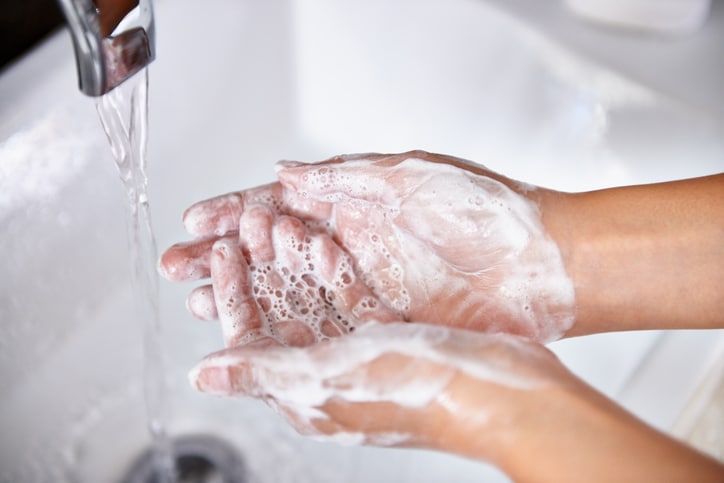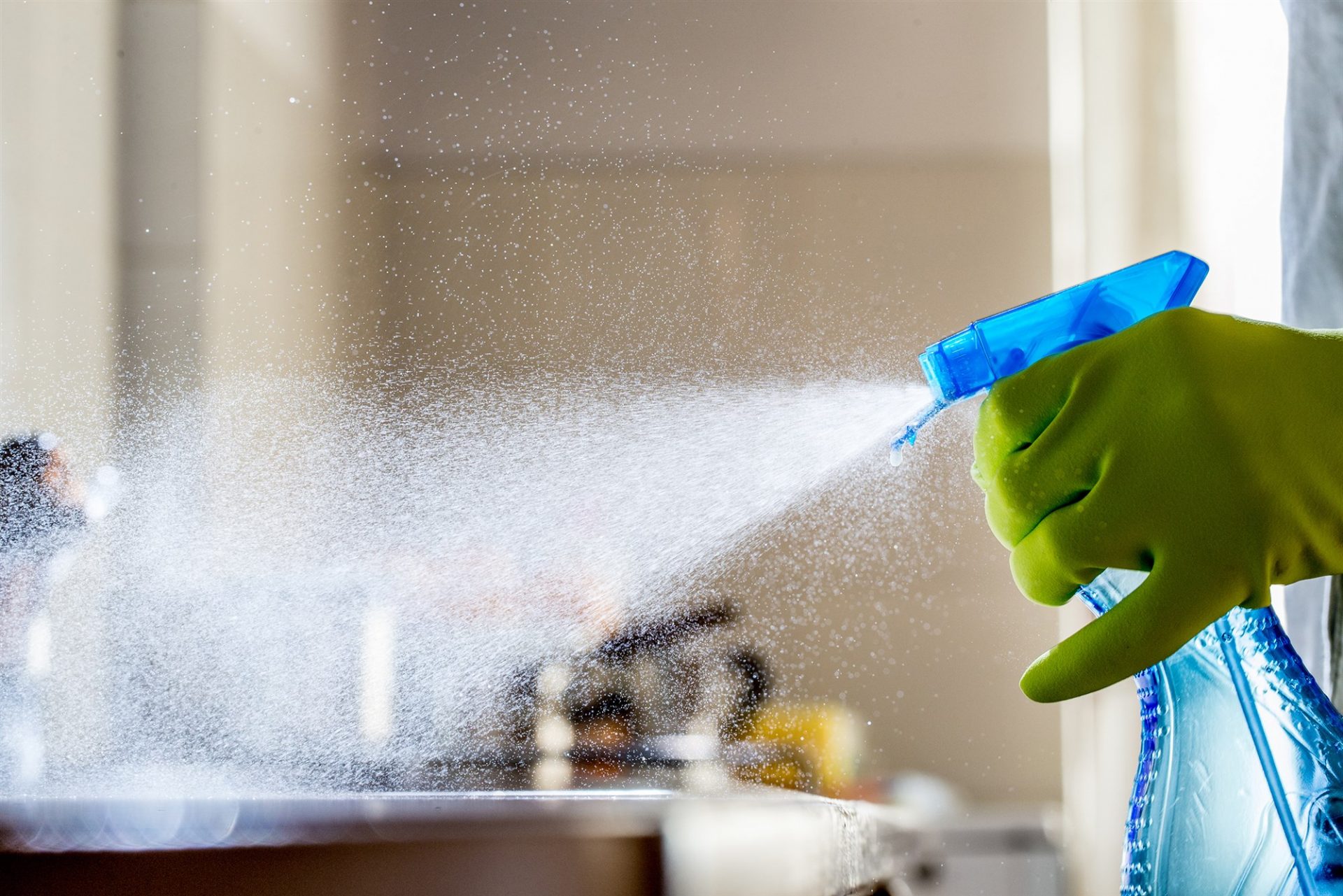The virus behind the current pandemic – and pandemonium – is plenty scary, but fortunately, it’s not particularly durable. Outside of a host organism, in fact, coronaviruses are quite easily dispatched. (The term coronavirus refers to a group of these viruses; the one currently causing headaches for humanity is SARS-CoV-2, which causes the disease officially known as Covid-19.)
The virus has a protein coat, but that’s easy enough to break down with a number of conventional household products. Once that’s done, the virus essentially collapses and “dies.” (Viruses are, strictly speaking, neither living nor non-living; they meet some, but not all, criteria for “life” so they’re right on the edge of what we think of as life.)
So that’s the good news. Yes, it’s a nasty virus, but like all other coronaviruses, it doesn’t stand much of a chance against a good household cleaner.
So how do you best go about cleaning and disinfecting your home? Here is a sample of what works well, based on compiled information from the Centers for Disease Control and Prevention in the US and experts at Consumer Reports magazine.

“Regular cleaning with normal cleaning supplies does a great job of removing all kinds of germs, not just coronavirus, from surfaces,” said Catherine Roberts, associate health editor at Consumer Reports. She added, “Focus on high-touch areas — that’s faucet handles, doorknobs, stair rails and countertops — the things that you have your hands on all the time.”
The Environmental Protection Agency has a list of household cleaners that meet its criteria for use against the novel coronavirus. The CDC website also has recommendations for households with suspected or confirmed coronavirus cases. However, some of these products may be US-only, as these are both American agencies. So here are some other things that work, and work well:
Soap and Water
It’s not fancy, it’s not flashy… and happily, it’s unlikely to be in short supply. Most importantly: it works. According to the American Chemical Society, most of the cleaning products we call soap are actually detergents that not only remove germs from surfaces, but also kill them.
Organic chemist Richard Sachlben explains: “The virus has an outside coating, and the stuff inside — DNA or RNA — is what actually causes the disease. For a virus, that coating is a protein, and the soap or detergent breaks up that coating, so the virus falls apart.”
So, using plenty of soap in a container of warm water (dishwashing detergent works fine, and has many other uses, too), wipe the desired surfaces thoroughly, and you’ll go a long way to eradicating most germs.
Bleach Solution
Good ol’ bleach. Sodium hypochlorite. It does more than whiten your clothes and eliminate stains from your toilet bowl. According to Dr. Paul Pottinger, Professor of Infectious Diseases at the University of Washington Medical Center, “Bleach is very effective at killing the coronavirus, as well as virtually every other germ on the face of the planet.”

The biggest problem with bleach, for most people, is the terrible smell. It can also actually damage the surface you’re trying to disinfect, in some cases. Fortunately, bleach doesn’t need to be used straight out of the bottle to be effective. It’s such a super-killer of germs, it’s still plenty potent, even when diluted.
For a simple and highly effective solution, add 1/2 cup of liquid bleach to four liters of water. (This is loosely based off the official CDC formula of 1/3 cup bleach to one gallon of water, which is about 3.75 liters.)
If there’s any doubt about the surface you’re cleaning, test first. Bleach can discolour some surfaces. Wear gloves when applying, and to avoid the nasty smell, opt for a lemon- or lavender-scented bleach.
Alcohol
No, don’t raid your home bar or attach a spray nozzle to a bottle of vodka. We’re talking about isopropyl alcohol (definitely not safe to drink), otherwise known as rubbing alcohol. Use it full strength from the bottle, and it will kill nearly all germs.
Hydrogen Peroxide
Peroxide isn’t as problematic as bleach, and it’s almost as effective against a wide spectrum of germs. As with rubbing alcohol, you’ll want to use hydrogen peroxide right from the bottle – don’t dilute it.
Do it right!
The proper cleaning technique is important, as well. A quick swipe with a cloth won’t get the job done, so put a bit of elbow grease into it, get the surface properly wet, and then let it dry on its own. Clorox recommends that the surface remain visibly wet or damp for about four minutes.
Beware of people who try to capitalize on the fear and panic during times like this, and who may be selling products they claim are effective, when in fact they are either not effective, or possibly even harmful.
In all likelihood, the best defenders against viruses and bacteria are products you already have at home. And, in case you’ve gone the last 15 minutes without hearing this: Wash your hands often!

"ExpatGo welcomes and encourages comments, input, and divergent opinions. However, we kindly request that you use suitable language in your comments, and refrain from any sort of personal attack, hate speech, or disparaging rhetoric. Comments not in line with this are subject to removal from the site. "























